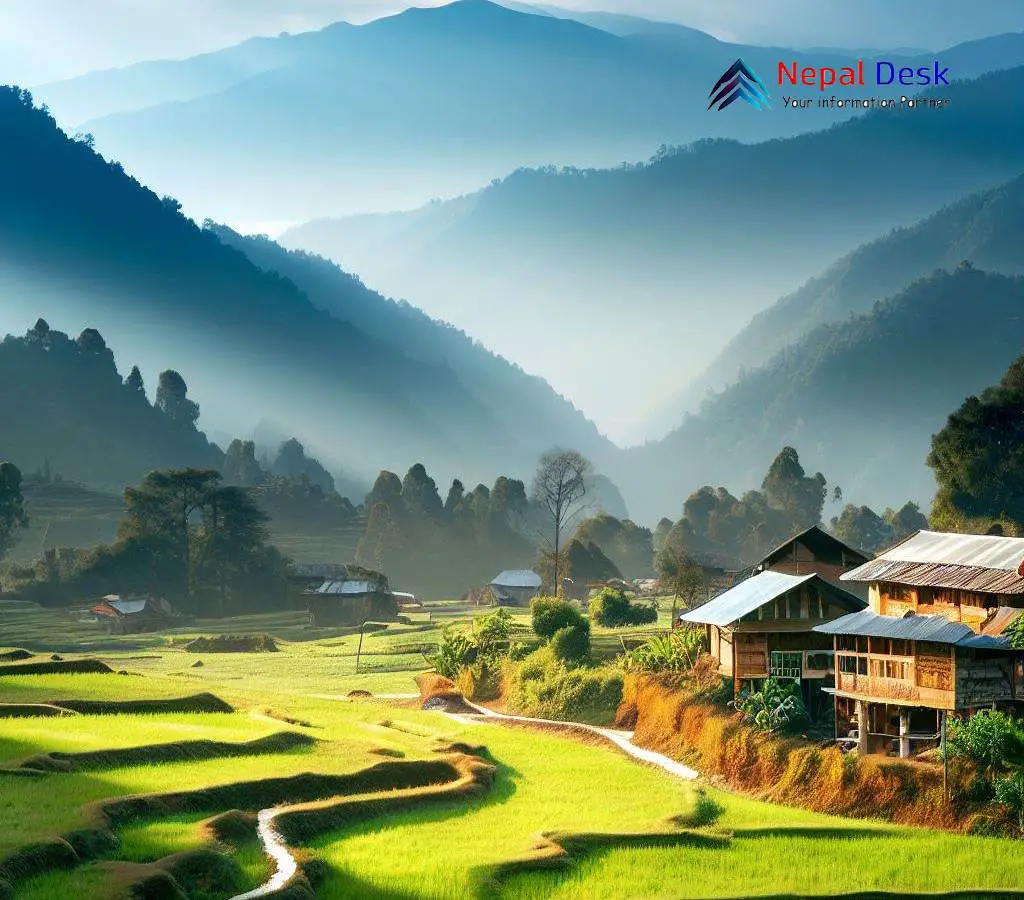Rural Tourism: A Beacon of Hope for Poverty Alleviation in Nepal
Published Date

Published Date
Nepal's fight against poverty sees hope in rural tourism. Discover how this sustainable strategy can bridge the urban-rural divide and boost local economies.
⏱ 5 min read
According to recent findings by the Central Bureau of Statistics (CBS) in their Nepal Living Standards Survey, the country has witnessed a remarkable decline in poverty rates over the last 20 years. Despite this positive trend, there remains a noticeable disparity between urban and rural areas.
The national poverty headcount rate saw a decline from 41.8% in 1995/96 to 25.2% in 2010/11, which was visible in both rural and urban regions. This suggests improvements in overall living standards across Nepal. That being said, poverty levels stayed higher in rural communities, where 27.4% of people were impoverished in 2010/11 compared to just 15.5% in urban centers.
Furthermore, the issue of consumption inequality was highlighted through changes in the Gini coefficient - a metric that ranges from 0 (perfect equality) to 1 (perfect inequality). While there was an initial increase from 0.322 in 1995/96 to 0.414 in 2003/04, it ultimately dropped to 0.328 in 2010/11. Even with this reduction, inequality persisted, as the later figure still surpassed the earlier rate of 1995/96. It's also worth mentioning that urban zones consistently displayed higher disparities related to consumption than those observed within villages.
In a more uplifting turn of events, nominal household consumption leaped from RS 38,703 registered during 1995/96 all the way up to RS 170,735 by the close of the period surveyed (2010/11). This upward shift may indicate economic progress and better living conditions; however, more extensive studies are required for confirmation.
As Nepal pushes onward with reducing poverty rates, these results emphasize the importance of deliberate efforts to eliminate glaring gaps between urban and rural populations along with consumption inequalities. It would be essential that as development moves forward, inclusivity and sustainability become the guiding principles for the nation's growth.
Nepal has made significant strides in combating poverty on a national level. Yet, the stark reality of rural regions remains, with poverty levels still being higher than in urban areas. As those involved seek lasting solutions, rural tourism is emerging as a potential strategy.
Boasting rich cultural heritage and stunning natural beauty, Nepal's countryside offers unique experiences that distinguish them from the often congested and commercialized urban tourist hotspots. The awe-inspiring Himalayan vistas and deeply rooted cultural customs attract a wide variety of travelers looking for genuine, off-the-beaten-track adventures.
Encouraging rural tourism can deliver a much-needed financial boost to these areas, aiding in the reduction of poverty. Tourism creates job opportunities, spurs local economies, bolsters environmental conservation initiatives, and fosters the preservation of cultural heritage. Moreover, growth driven by tourism can lead to infrastructural advancements in fields like roads, healthcare facilities, and educational institutions - vital elements in combating poverty.
Nevertheless, the promotion of rural tourism must be done responsibly and sustainably. Irresponsible tourism can cause environmental destruction, cultural decline, and economic inequality. Incorporating local communities in planning and decision-making processes is vital for safeguarding their interests while benefiting greatly from both their cultural assets and natural resources.
A number of programs that support rural tourism are already positively affecting various parts of Nepal. Community homestays - where travelers stay with local families - provide visitors with one-of-a-kind cultural experiences while generating revenue for the host households. Additionally, new trekking paths through remote villages have been developed to offer business opportunities for locals.
As Nepal works toward alleviating rural poverty, attention is shifting to the untapped potential of rural tourism. For those visiting Nepal, the countryside provides a plethora of avenues for discovering the nation's splendid cultural history and breathtaking natural wonders.
Venturing beyond crowded cities and well-trodden tourist destinations, rural Nepal delivers an entirely distinct travel experience. Visitors can delve into local customs, be part of age-old festivities, and gain insight into country living. From homestays providing a peek into the lives of locals to treks meandering through picturesque landscapes and quaint villages, abundant unique and genuine experiences await.
For fans of nature, rural Nepal is heaven on Earth. The varied terrain, ranging from soaring Himalayan summits to fertile Terai lowlands, caters to a broad selection of outdoor adventures. Travelers can embark on treks, birdwatching excursions, mountain biking trips, or simply relish in the serenity of idyllic countryside views.
Culture aficionados won't be disappointed either when exploring rural Nepal. The region's vibrant cultural heritage flourishes in its rural communities where time-honored customs and rituals prevail in daily life. Tourists can uncover local craftsmanship, join in communal celebrations, and savor authentic Nepali dishes.
In summary, as Nepal perseveres in its quest to tackle rural poverty, the rise of rural tourism signifies a win-win scenario. For countryside residents, it represents a lasting income stream and an opportunity to safeguard their cultural legacy. For tourists, it grants access to seldom-seen aspects of Nepal that deliver extraordinary experiences enriching their appreciation for the nation and its inhabitants.
Looking just ahead, the promise of rural tourism in Nepal is undeniable. It presents a chance to foster a more equitable and sustainable tourism sector benefiting both local communities and visitors drawn by the rich cultural tapestry and stunning natural allure of this captivating country.
